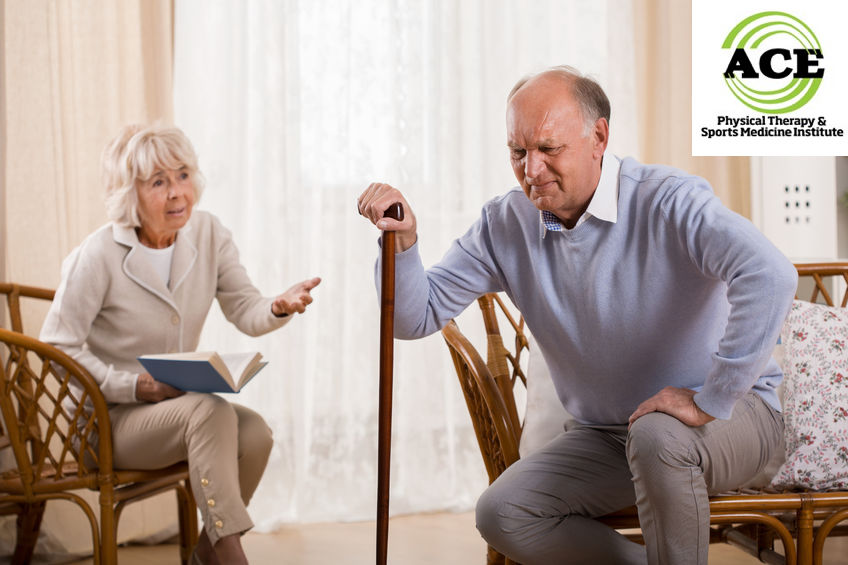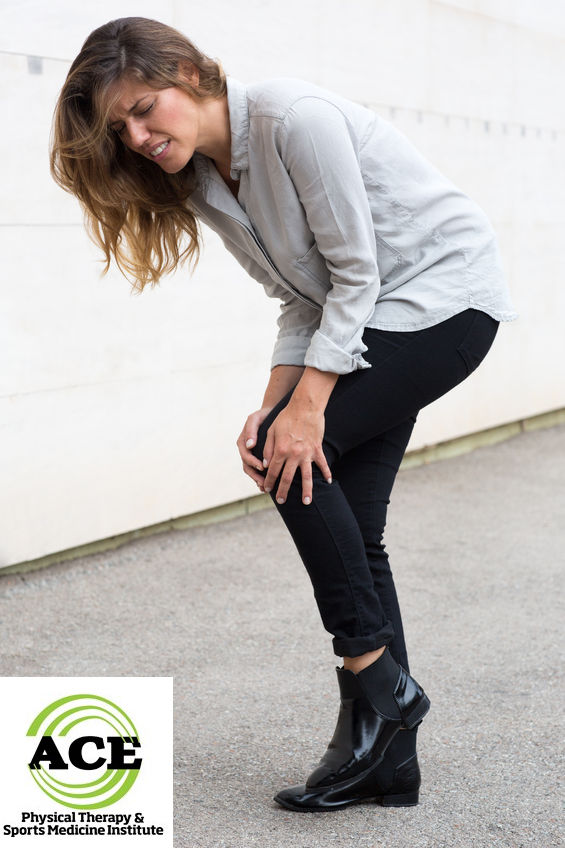LIFE LONG HEALTH PROBLEMS DUE TO ANKLE AND KNEE INJURIES

Tid Bits of Info
- Greater than 50% of knee injuries that require surgery will develop arthritic changes in the involved knee by the time the patient is 40 years old.
- As many as 40% of the people that had knee surgery developed cardiorespiratory conditions in their 40s.
- Osteoarthritis can lead to decreased muscular strength and dynamic support of the involved joint.
- Pointe shoes are hand-made and the toe box is glued and baked in an oven to make it stiff.
- Strength training 2-3x per week is all that is needed to maintain adequate muscular strength and control of an involved joint.
- Seek the advice and treatment of a Physical Therapist that specializes in orthopaedic, sports injuries.
As we age, old injuries can impact us in ways that extend far beyond the damage. In spite of injuries, we can learn how to develop and maintain a healthy, active lifestyle, helping us to enjoy a long term quality of life. Ankle and knee injuries can impact us decades after the original injury especially if surgery was needed to “fix” the problem. The potential health issues are not always isolated to the injured joint. In many instances when people suffer serious knee or ankle injuries in their 20s, they develop arthritis in the involved joint by time they are in their 40s. At the same time, they also may develop cardiovascular and respiratory conditions. The lack of an active lifestyle due to pain in the previously injured joint leads to a great deal of inactivity which sets them up to be a prime candidate for cardiorespiratory problems.
The knee and ankle joint have to support our entire body weight during life’s activities. The joint’s ability to do so without experiencing pain depends on several factors. The end of the bones is covered with articular cartilage (hyaline) and the muscles that surround the joint help to dynamically support it. If the joint is injured, the cartilage can be damaged and the muscle structure can become less active and effective. The injury to the joint can lead to an abnormal amount of sheer or compressive force on the hyaline cartilage. The abnormal forces can lead to break down of the cartilage, and it does not repair itself. The joint inflammation due to injury can cause the muscles to work less effectively and they provide less or no dynamic support.
When the joint is not supported, it is much more susceptible to long term damage. There is excessive motion with every step and this develops more friction and heat within the joint. The increased heat can lead to cartilage damage. Cartilage does not heal itself and in many instances surgery is needed to help the joint regain its functional capabilities. Unfortunately, the need for surgery on the ankle or knee joint is often a predictor of future health problems. The studies indicate that a person that has experienced an injury to their ankle or knee that required surgery when they were younger, is predisposed to arthritic changes in that joint and a host of other physical ailments due to the sedentary lifestyle that they develop as they age because of pain in the involved joint.
Some survey studies indicate that someone experiencing an injury to the knee or ankle (especially in cases of surgery) can experience arthritic changes at a rate that exceeds 20% greater occurrence. When these results are studied further, it is quite apparent that the life-long impact of these injuries is significant. As many as 20% of the respondents indicated that they had suffered an injury to their ankle or knee and were currently experiencing and being treated for cardiorespiratory health conditions.
When a person suffers an injury to their ankle or knee when they are younger, healthcare professionals should stress the importance of maintaining a healthy body weight and exercise routine for a life time. The injury can be treated acutely and the person can usually resume all activity but if they do not maintain the motion and strength in the involved joint throughout their lifetime, they are predisposed to arthritic changes in the joint and other health issues that can lead to a devastating lifestyle.
When the injury occurs and the rehabilitation efforts are performed, the patient should be instructed on a life-long exercise routine. If this does not happen, the person who has suffered an injury to their knee or ankle joint (or both) when they are young, should seek the advice and treatment from a Physical Therapist that specializes in orthopaedic sports injuries. These healthcare professionals are capable of assessing the status of the previously injured joint and prescribe an exercise routine that will enhance the muscular activity and strength throughout the person’s core and lower extremities. The best defense against arthritic joint changes and cardiorespiratory disease is to stay active, maintain a healthy body weight, don’t smoke and eat properly.
Seeking help from a Physical Therapist is easy and does not require a visit to your doctor. The Physical Therapist is a first line healthcare provider and can evaluate and treat a patient without a doctor’s prescription. The patient needs to contact their insurance to find out if the insurance company requires a referral from their general practitioner.
Ankle and knee injuries that are suffered when someone is young can become a life-long problem if the proper precautions are not taken throughout their lifetime. Healthcare professionals need to stress the importance of maintaining a healthy, active lifestyle that includes a consistent strengthening program for their lower extremities. The effects of osteoarthritis on a joint can cause so much pain and disability that the person can become sedentary and develop cardiorespiratory conditions that are life threatening. Maintaining motion and strength in the injured joint throughout a lifetime, can help to prevent many life altering conditions that can occur if the pain and disability from an arthritic joint condition is allowed to control their life.


























PTs play a vital role in educating patients on the importance of maintaining a life-long exercise regimen to allow the muscles to optimally move and protect the body’s joints. In taking this professional role seriously we can improve our patient’s quality of life and improve their human experience by reducing the amount of damage incurred to their joints. This education can also help disrupt the pain disability cycle that a patient can enter as they avoid movements and activities that cause them pain. As a result of breaking this cycle, the effect of cardiorespirtory problems on our patient’s lives can be minimized.